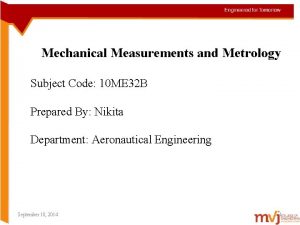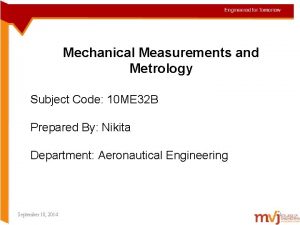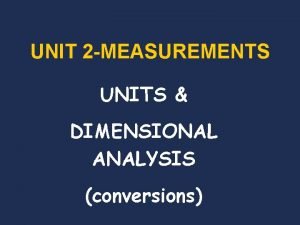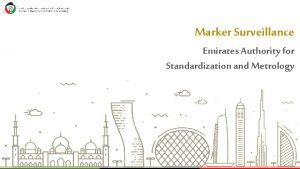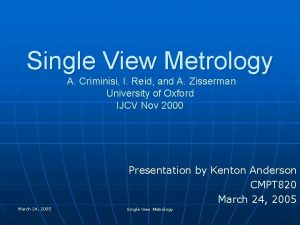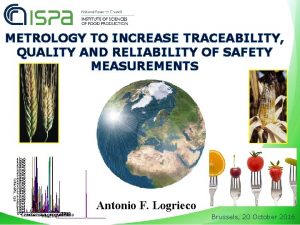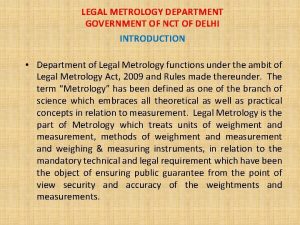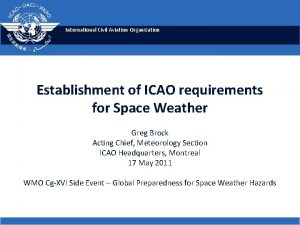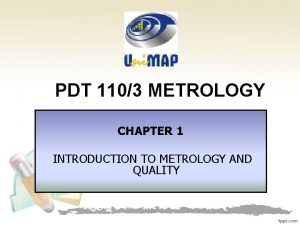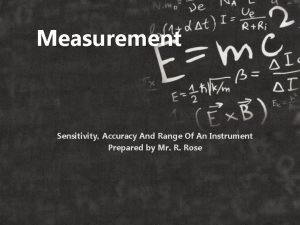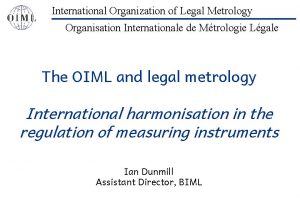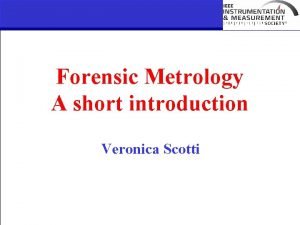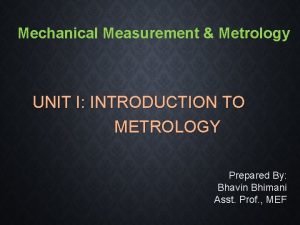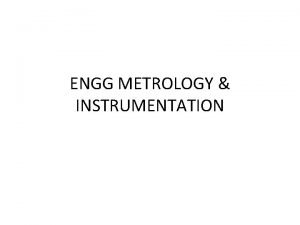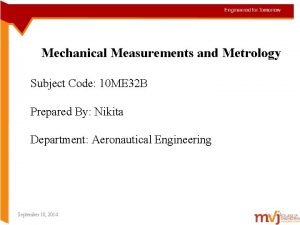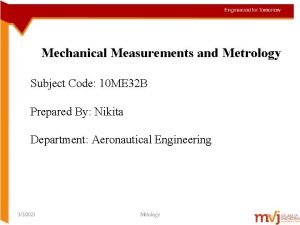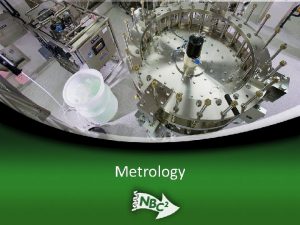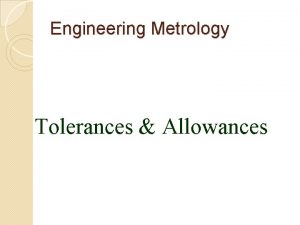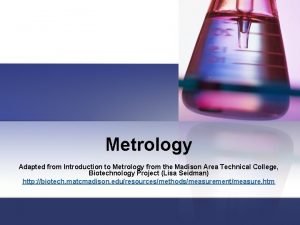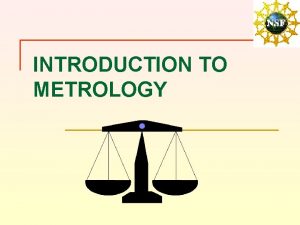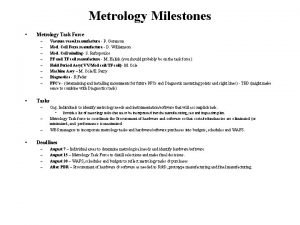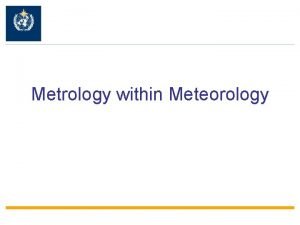MECHANICAL MEASUREMENTS AND METROLOGY UNIT I STANDARDS OF





















- Slides: 21

MECHANICAL MEASUREMENTS AND METROLOGY

UNIT I STANDARDS OF MEASUREMENT INTRODUCTION v In 3000 BC Royal cubit was defined as the length of the forearm of the ruling Pharaoh, plus the breadth of his hand v In 16 th century feet was created v In 18 th century yard was declared by King Henry v In 19 th century Meter was upgraded and wave lengths of light proved a remarkable standard

STANDARDS OF THE PAST � People used to use parts of their body to determine the length of something. � The standard would be a part of the king’s anatomy. � The standard yard was the distance from the king’s nose to his outstretched arm

People would use their feet to measure distance � This is how the term foot came about. � Today the standard “foot” in the English system is � 12 inches = 1 foot • machine

STANDARDS OF LENGTH: English Standards Metric Standards ØEnglish Standard: Master Standard (Instrument) i. e. Imperial standard yard ØMetric Standard : Master Standard (Instrument) i. e. International Prototype meter

The English system is very confusing because it has so many different values

Scientists give the English system the thumbs down Scientists needed an exact and uniform system of weights and measurements

America is the only country that still uses the old English system

IMPERIAL STANDARD YARD: v. The British Imperial Standards were introduced in 1824, to systematise the varying standards that had been used previously. Unfortunately these standards were destroyed when the British Houses of Parliament burned down in 1834, and new standards had to be established

v. The British Imperial Standards were introduced in 1824, to systematise the varying standards that had been used previously. Unfortunately these standards were destroyed when the British Houses of Parliament burned down in 1834, and new standards had to be established v. This standard yard was kept with other standard measures in the basement at Melbourne Observatory, to reduce the effects of changes in temperature. Even so special calculations had to be made to allow for the expansion and contraction of the metal in the standard yard. v The standard yard was set up in a machine fitted with microscopes, so that exact comparisons could be made of two measures.

SCHEMATIC REPRESENTATION OF IMPERIAL STANDARD YARD

INTERNATIONAL STANDARD PROTOTYPE METER The International Bureau of Weights and Measures established the Meter as the linear measuring standard in the year 1875. The Meter is the distance between the centre portions of two lines engraved on the polished surface of a bar made of platinum(90%) iridium (10%) alloy having a unique cross section. This bar is kept at 0 C and under normal atmosphere pressure.


Figure : The 1875 W. & T. Avery Imperial Standard Yard in its original case.




A SLIP GAUGE SET



THANK YOU
 Metrology and measurements subject code
Metrology and measurements subject code Metrology and measurements subject code
Metrology and measurements subject code Saudi standards, metrology and quality organization
Saudi standards, metrology and quality organization Dimensional analysis
Dimensional analysis Software measurement and metrics
Software measurement and metrics Esma accredited laboratories
Esma accredited laboratories Actual mechanical advantage vs ideal mechanical advantage
Actual mechanical advantage vs ideal mechanical advantage Factors necessary for service standards are
Factors necessary for service standards are Single view metrology
Single view metrology National metrology institute of japan
National metrology institute of japan Reliability in metrology
Reliability in metrology Legal metrology department
Legal metrology department International metrology organization headquarters
International metrology organization headquarters Metrology
Metrology Introduction to metrology
Introduction to metrology Pakistan meteorological department founded
Pakistan meteorological department founded Define sensitivity in metrology
Define sensitivity in metrology International organization of legal metrology
International organization of legal metrology Forensic metrology
Forensic metrology Metrology
Metrology Metrology
Metrology Ebbing metrology
Ebbing metrology
